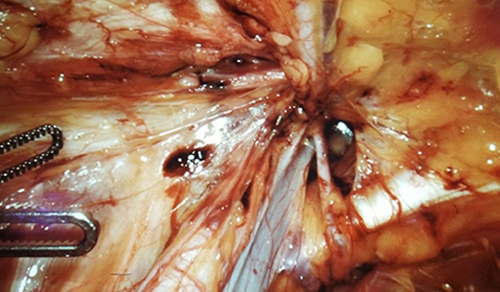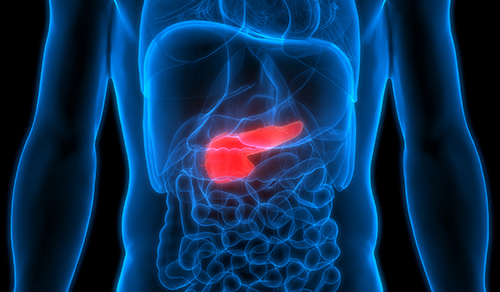Advancing Care for Foot and Ankle Disorders

Justin K. Greisberg, MD
When Justin K. Greisberg, MD, Chief of the Foot and Ankle Service, joined the Department of Orthopedics at NewYork-Presbyterian/Columbia University Medical Center in 2002, he had been tapped to redevelop the service, which although having had a rich history at the Hospital, had not had dedicated orthopedic surgeons in the subspecialty for several years. In 2011, J. Turner Vosseller, MD, joined Dr. Greisberg, and today their combined clinical, research, and education expertise and pioneering work in complex reconstructive surgeries and orthopedic trauma is benefitting patients and the subspecialty alike. This article focuses on their work in two particularly challenging clinical scenarios: the posterior pilon fracture and determining return to play following an ankle injury in professional athletes.
Posterior Pilon Fracture: An Alternate Approach to an Age-Old Challenge
For many years, orthopedic surgeons have approached posterior pilon fractures from either the side or from the front. The latter technique involves making a long medial incision and dislocating the ankle in order to reach and then reduce the fracture. It also requires extensive soft tissue stripping of fracture fragments. “It was a good way to deal with the fracture pattern, but it was quite invasive,” says Dr. Greisberg. “Today, we try not to be so aggressive in our dissections.”

Postoperative films after surgical fixation of a posterior pilon fracture. The fibula is reduced and plated after the tibia through the same posterolateral incision.
Recognizing that standard anterior, medial, or lateral surgical approaches to the ankle provided poor visualization and limited access to the posterior plafond, Dr. Greisberg looked for an alternate way that would produce better functional outcomes. “I had approached the area from the lateral side, I tried it from the medial side. It’s really difficult to reach,” says Dr. Greisberg. “From the standard sides, nothing worked well.”
Many years ago, Dr. Greisberg was discussing treatment approaches for this challenging fracture with a trauma surgeon. “He said, ‘why don’t you just go from the back?’ He meant it as a joke, but it actually made sense to me,” says Dr. Greisberg. “So, we started accessing the tibial plafond with a posterolateral approach, which is generally used for tibia fractures located higher up. It had never been described before as being done in the ankle. I didn’t invent the approach, I just refined it for these fractures.”
Dr. Greisberg subsequently undertook a retrospective study of 15 patients with posterior pilon injuries that he had treated with either a posteromedial, posterolateral, or a combined technique between 2002 and 2007. “We looked at any surgical complications and examined their imaging studies for alignment and arthrosis,” notes Dr. Greisberg. “We found the posterior technique to be safe with no subsequent neurovascular injuries or infections. We were able to directly expose and reduce posterior fragments without the expansive soft tissue stripping and achieved a good reduction in the majority of cases.”
“Since then other surgeons have written similar observations of this approach, which has become more mainstream,” says Dr. Greisberg. “There’s an old expression that the eyes can only see what the mind knows. So, years ago surgeons never thought about using the posterolateral approach to these fractures. Now we use it all the time because we’re able to recognize more and more that many fractures that we thought didn’t need this approach actually do.”
Timing Is Everything: Optimizing Return to Play
Interestingly, despite that determining the optimal time for a professional athlete to return to competition following a foot and ankle injury is possibly the most critical question in sports medicine, few studies have to date provided solid evidence for developing decision-making protocols. “It may seem like a simple question, but how does the team doctor or any physician decide when to tell the patient, ‘you’re ready to go,’” says Dr. Greisberg. “The approach currently is that the trainer, the coach, the athlete, and the physician all weigh in on this decision. And while we may all agree the time is right, it isn’t a scientific process.”
“Through this study, our goal is to establish objective parameters for determining when an ankle that’s injured is ready to be returned to play without excessive risk of reinjury.”
— Dr. Justin K. Greisberg
To address this issue, Drs. Greisberg, Vosseller, and their colleagues are working on one of the first studies to develop criteria for return to play of high level athletes following a foot and ankle injury. He and his team have developed a number of ankle function tests — for example, jumping on one leg — and over the past three years have evaluated 100 collegiate, high-level athletes to identify how a healthy athlete performs. They are now doing the same tests with injured athletes to distinguish how they do over time. “In the beginning they can barely do the test, and as they get stronger they do better and better,” says Dr. Greisberg.
While the study is now in the data analysis phase, initial findings indicate variability among the athletes in terms of how they perform on the objective tests. “For example,” notes Dr. Greisberg, “football players, and sometimes the linebackers, are a little less nimble. Their balancing and dexterity maneuvers are not as good as say a soccer player or a gymnast. Also, because the right and left leg often function fairly symmetrically, we may be able to compare pre-injury baseline data obtained at the beginning of the season for each leg to data obtained following an injury, rather than using an absolute score to determine return to play. Through this study, our goal is to establish objective parameters for determining when an ankle that’s injured is ready to be returned to play without excessive risk of reinjury.”
Related Publications

Protocol-Based Management of Geriatric Hip Fracture








